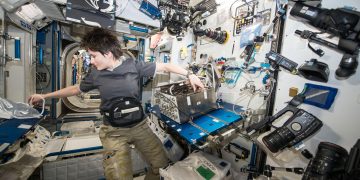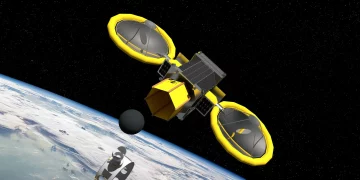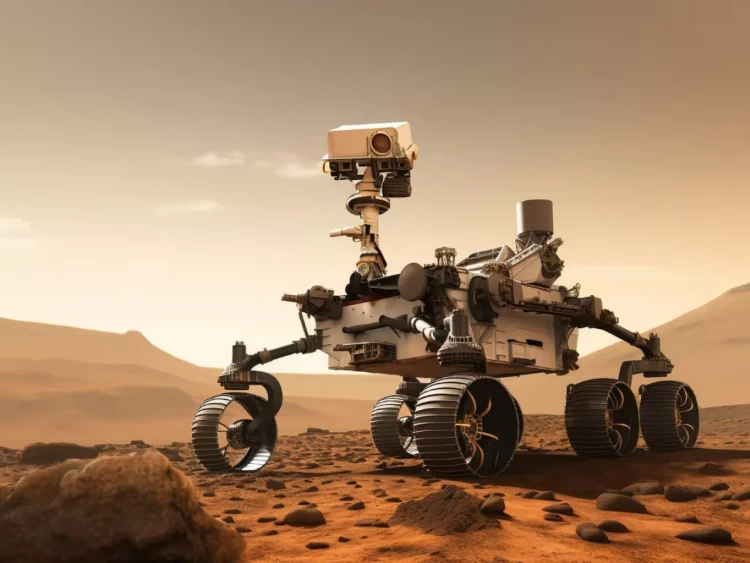Introduction: A Dream or a Dystopia?
When we look up at the night sky, one celestial body stands out more than the rest—Mars. The red planet has captured humanity’s imagination for centuries, evoking dreams of exploration, colonization, and the possibility of a new home. From the early days of telescopic observation to the latest technological advances in space exploration, Mars has held the promise of a second Earth. But is it truly the next frontier for human civilization, or is this vision simply a mirage, tantalizing yet unattainable?
In this article, we’ll explore the feasibility of Mars as a potential home for humanity, examining the scientific, technological, and ethical hurdles we must overcome. Along the way, we’ll take a closer look at the most recent developments in space travel, Mars research, and the growing ambition to make life on Mars a reality.
The Case for Mars: A Planet with Potential
Mars is often touted as the most Earth-like planet in our solar system. With its days just slightly longer than ours (24.6 hours), and its surface gravity about 38% of Earth’s, Mars has a number of characteristics that make it seem like an ideal candidate for human colonization. Its terrain features mountains, valleys, and large ice caps, and it has evidence of liquid water in its past. For these reasons, Mars has captivated the attention of scientists, engineers, and even filmmakers, who envision a thriving, human-settled world.
1. The Search for Water
Water is essential for life, and Mars holds significant clues to this fundamental requirement. The presence of ice at the poles, as well as signs of ancient rivers and lakes, suggest that Mars may have had a wetter and warmer past. While there is no liquid water on the surface today, recent missions have discovered evidence of briny water beneath the surface, which could potentially be extracted for human use.
NASA’s Perseverance rover, which landed on Mars in 2021, has been actively searching for signs of ancient life and has taken samples from Mars’ Jezero Crater that could help scientists understand the planet’s water history. If there are viable sources of water beneath the surface, it could be the key to supporting human life on Mars—through drinking water, agriculture, and even oxygen production.

2. The Atmosphere—Thin but Protective?
Mars has a thin atmosphere made primarily of carbon dioxide, with traces of nitrogen and argon. While it’s far too thin to support human life in its current state, it’s not entirely devoid of value. The presence of CO2 opens up the possibility of using the atmosphere for future technologies, such as converting it into oxygen and fuel.
However, the Martian atmosphere does not protect against harmful radiation, unlike Earth’s magnetic field and thick atmosphere. This means that any long-term settlement on Mars would have to address radiation protection through habitats, space suits, or advanced technologies like terraforming.
3. Terraforming—A Far-Off Hope?
Terraforming, the process of making Mars more Earth-like by altering its atmosphere and environment, is a central concept in Mars colonization plans. The idea is to thicken the atmosphere, increase temperatures, and create a stable environment for humans and other life forms to thrive. However, current technology is far from capable of such a feat. To date, no successful methods for large-scale terraforming have been devised, and the process could take centuries, if not millennia.
The Technological Hurdles: From Earth to Mars and Back
While the dream of colonizing Mars has captured the world’s imagination, getting there is a monumental challenge. The distance between Earth and Mars ranges from 34 million miles to over 250 million miles, depending on the relative positions of the planets. Current rocket technology would take at least six to nine months for a one-way trip. But that’s just the beginning of the problem. Once on Mars, humans would have to contend with a host of technological and logistical challenges.
1. Rocket Technology—Paving the Path
Recent advancements in space technology have brought us closer to the goal of interplanetary travel. The development of reusable rockets by companies like SpaceX has dramatically reduced the cost of space travel and increased the frequency of missions. Elon Musk’s ambitious plans for Mars colonization through the Starship program aim to send large numbers of people and cargo to Mars within the next decade.
Starship is designed to be fully reusable and capable of carrying up to 100 tons of cargo or 100 people to Mars. The spacecraft is expected to play a critical role in the initial stages of Mars colonization, but many technological, logistical, and financial hurdles remain before it can be used for regular missions to the Red Planet.
2. Life Support Systems—Surviving on Mars
Once humans arrive on Mars, they will face the challenge of survival in an inhospitable environment. The Martian atmosphere provides little protection from the harsh conditions, and the planet’s surface temperature averages around -60°C (-80°F). A colony on Mars would need a sustainable life support system to provide breathable air, water, food, and shelter.
Creating a self-sustaining habitat on Mars would involve advanced technologies in recycling, resource extraction, and food production. The development of closed-loop systems, where air and water are constantly recycled, is already underway on Earth for use in submarines and space stations. These systems will be critical for the long-term success of Mars missions.
3. Energy—Powering the Future
Energy is another key challenge for Mars colonization. The planet is farther from the Sun than Earth, meaning solar power would be less efficient. Solar panels would have to be large and high-efficiency to generate enough energy for a Mars base. Other potential sources of energy include nuclear power, which could provide a stable, long-term solution for electricity generation.
Nuclear reactors, such as those being developed by NASA for use on the Moon and Mars, could provide reliable power for life support systems, mining operations, and habitats. However, safety concerns, waste management, and the logistical challenges of transporting nuclear fuel are significant issues that must be addressed.

4. The Return Trip: Bringing People Home
While getting to Mars is a significant challenge, returning to Earth presents its own set of problems. With limited resources and technology, it may be difficult to launch a return mission without considerable investment and planning. Technologies like the Mars Ascent Vehicle (MAV), which could lift people and samples from Mars’ surface back to orbit, are still in the concept phase.
In the future, developing a reliable and cost-effective way to return to Earth will be essential. SpaceX’s Starship, for example, is designed to be capable of launching from Mars and returning to Earth, though this technology is still in its early stages.
The Human Factor: Ethical Considerations and Psychological Challenges
Colonizing Mars is not just a matter of engineering and technology. It is also a deeply human endeavor that raises significant ethical, psychological, and social challenges.
1. Psychological Effects of Mars Colonization
The isolation, confinement, and harsh conditions on Mars would have profound psychological effects on astronauts and colonists. Long-term space travel—especially to a distant and hostile environment like Mars—would put mental and emotional strain on individuals and groups. The distance from Earth would mean limited communication, with delays of up to 20 minutes each way for messages.
In addition, the stress of living in a confined space, coupled with the lack of social interaction and exposure to nature, could have serious mental health consequences. Psychological support systems, including regular communication with loved ones and access to mental health resources, will be essential for the success of Mars missions.
2. Ethical Dilemmas: Who Owns Mars?
As interest in Mars colonization grows, questions about the ethical implications of settling on another planet become more pressing. Who owns Mars? Is it the responsibility of humanity to protect and preserve the Martian environment, or should it be seen as an opportunity for exploitation and expansion? The 1967 Outer Space Treaty, signed by over 100 countries, prohibits claims of sovereignty over celestial bodies. However, as private companies like SpaceX and Blue Origin become involved in Mars missions, questions about the commercialization and privatization of space will become increasingly important.
Conclusion: A Red Mirage or a Bright Future?
So, is Mars really our next home, or just a red mirage? While the challenges are immense, the technological, scientific, and human hurdles are not insurmountable. Mars holds a tantalizing potential for the future of humanity, but it will require an unprecedented global effort to overcome the barriers to colonization.
For now, Mars remains a distant dream—one that may take decades, or even centuries, to realize. Yet, every scientific breakthrough, every successful launch, and every discovery made on Mars brings us one step closer to turning that dream into a reality. Whether Mars becomes humanity’s next home or remains a distant, red mirage, the journey will continue to inspire generations to come.


















































Discussion about this post